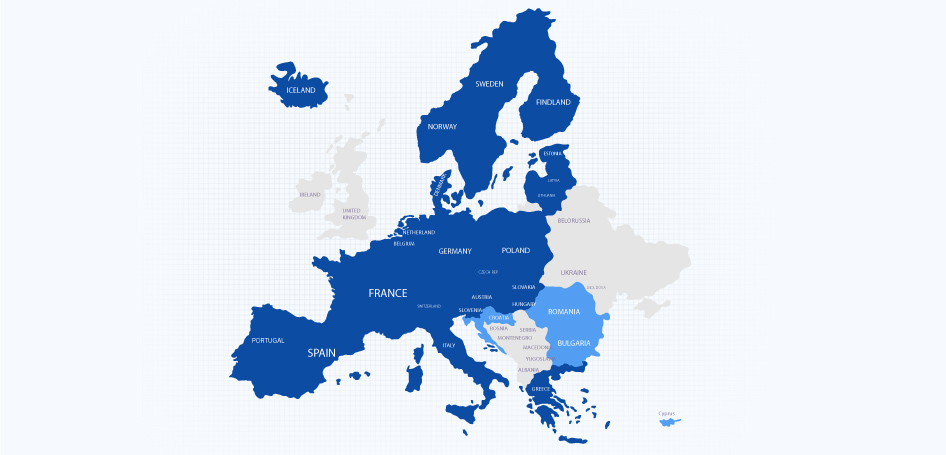
History of the Schengen Area and the
Schengen Travel Zone

The Schengen Agreement is a landmark treaty signed in Schengen, Luxemburg the summer of 1985 by five European Union (EU) Countries; France, Germany, Belgium, Netherlands and of course, Luxemburg. The agreement was first inspired by the goal to end intercountry border controls to allow free passage for workers between European Union (EU) countries and states.
Five years later, in 1990, a Convention was signed putting into effect a single uniform visa, collectively aligning immigration procedures, with the inception of a master shared database known as SIS, Schengen Information System. By 2011 most of Europe had moved to open borders, thus creating a visa-free travel zone on the European continent. The member countries of the Schengen Area became the largest region in the world to remove border controls.
The Schengen Area has grown to 26 countries including 22 in the EU and four others; Iceland, Lichtenstein, Norway and Switzerland. This region has long been a top-rated destination for U.S. tourists. It is projected that more than 12 million Americans will visit the EU this year. Visitors to The Schengen Area from other countries number in the hundreds of millions annually. This ever-increasing influx of travelers demonstrated a need for more thorough screening and data collection process. Safety is the priority that has driven the development of the European Travel Information and Authorization System, which goes into effect in late 2002, or possibly early 2023. The ETIAS visa travel waiver will allow visitors from 60 ETIAS-eligible countries, including the U.S., to travel freely to and through The Schengen Zone.


